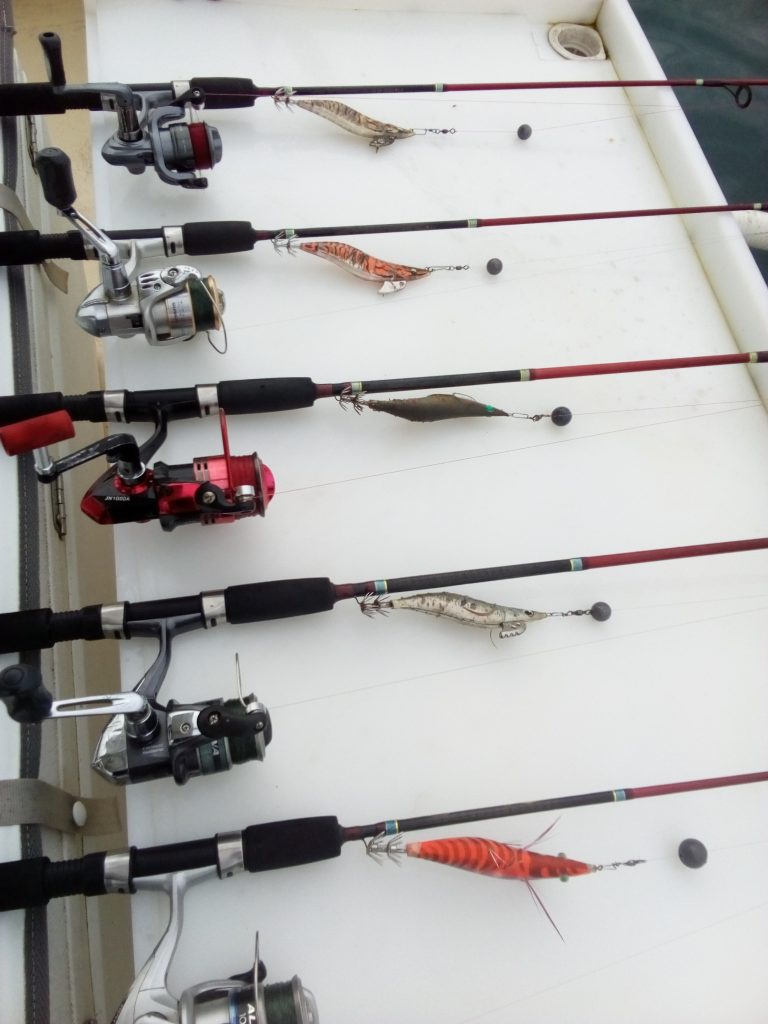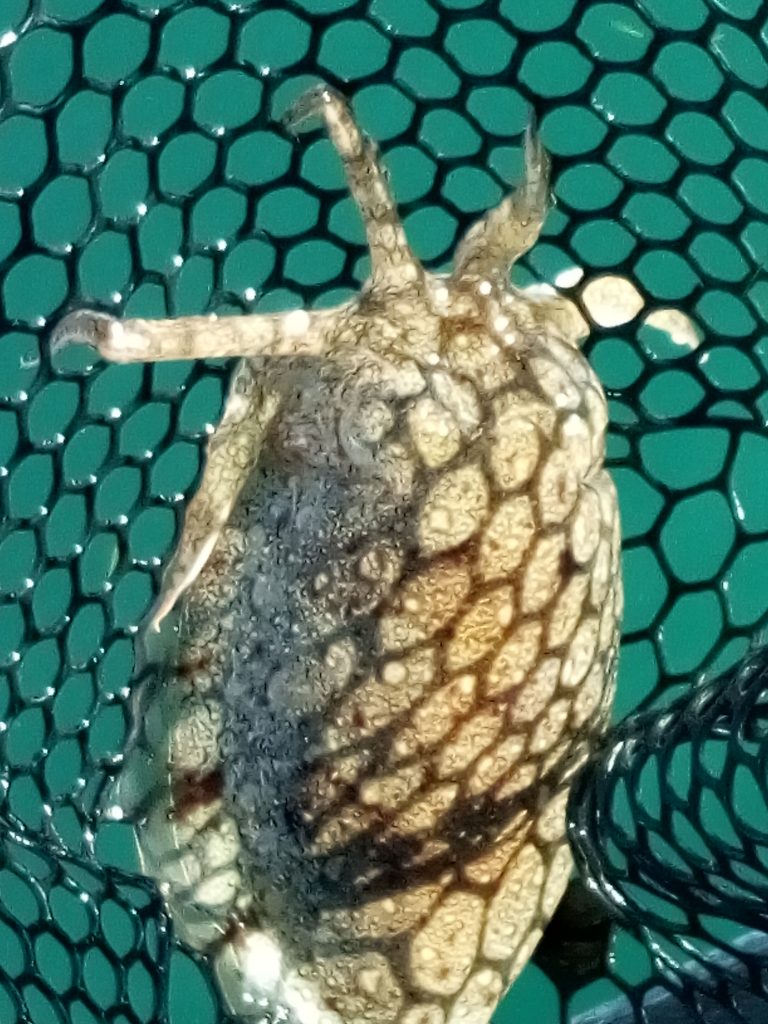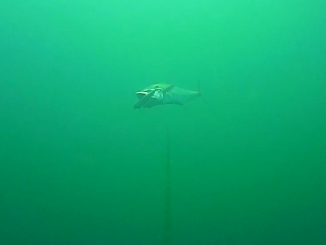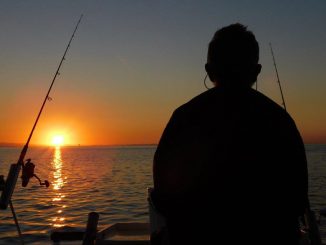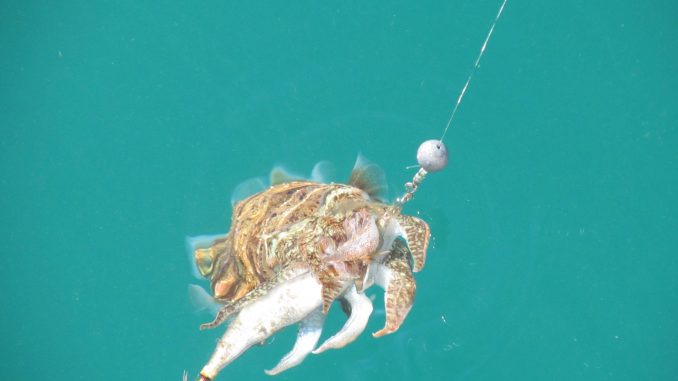
• Spero Kartanos (first published July 2021)
In late autumn and right through winter, Moreton Bay comes alive with cuttlefish. If you haven’t caught them before, I have good news for you: they’re easy to catch! You can catch both of cuttlefish and tiger squid in the same areas and depths in the cooler months, but in this article I will focus on cuttlefish.
Cuttlefish are usually found in around 23-35ft of water, and you can catch them from Ormiston all the way through to east of St Helena Island. If you start at the 23ft mark and drift out, you should get onto them sooner or later. A sure-fire way to know if they are around is when you see their backbones floating on the surface.
There is no minimum size for cuttlefish, and the bag limit is 50 – although I prefer to only keep enough for a feed. The average size in the bay is around 20cm including the tentacles, and the biggest I have caught was around 28cm. They might not be as big as those caught in southern states, but they’re just as tasty.
The run-out tide is the best time to fish for cuttlies. When it comes to the method, it’s just a matter of drifting with your squid jig just off the bottom, and waiting for the cuttlefish to grab it. A little up-and-down movement helps to gain their attention, but remember that cuttlefish tend to grab the jig when it stops moving, so you need to pause the jig frequently. A sinker above the jig will help because you will be drifting quite deep, and you need to be 1-2ft off the bottom.
Moving on to rods and reels, any 6ft whiting rod around 4-8lb will do the trick, matched to a 1000-2500 size reel spooled with 8-10lb mono line. Growing up we used handlines and those did the trick as well, but we got inked much more often many more times because we were pulling them straight towards us.
All squid jig colours will work on a given day, but I have found that prawn patterns in orange and pink work well. I have also had good results on red patterns, and pilchard and whiting colours.
If you are new to catching cuttlefish, I recommend starting off with Jarvis Walker Razorback jigs, which have extra spikes in the middle of the body. Cuttlefish usually grab jigs in the middle, rather than on the end like squid do, so the Razorback holds the cuttley more securely. When you hook cuttlefish on a regular jig, there is a greater chance that they will let go when you bring them up.
Over time you’ll get better at bringing cuttlefish to the boat without losing them, and at this point you can graduate to a regular jig. I use 3.0 and 3.5 size jigs, and my favourites at the moment are the Masuta RC (red colour), and the Yamashita Egi Sutte-R in NKN and ROL (natural baitfish colours). These three have been working the best for me lately.
There are two tricks to bringing cuttlefish in successfully. The first is to give a little tug when the cuttlefish first grabs the jig, to hopefully make its tentacles slide down to the barbs at the bottom. The second trick, after that initial jerk, is to bring the cuttlefish in very slowly. This way, even if it’s not securely hooked, it will still hang on. Once the cuttlefish is near the surface, you can whip out your long-handled net and quickly scoop it up before it lets go. A net with a rubbery mesh is better than a net with knotted string, because the squid jig prongs get caught in the string more easily.
A long-handled net really is essential for scooping up these tasty cephalopods, because the handle keeps them away from the boat, and you can let them sit out of the water to expel the water they are holding in their body. A cuttlefish stores just a tiny bit of concentrated ink in its body, and it needs water to dilute the mixture so it can squirt it at you. If the cuttlefish sits out of the water and squirts out all the water in its body, it can’t ink you once it comes aboard.
And while we’re talking about ink, cuttlefish ink is 10 times stronger than squid ink! It is potent stuff. Cuttlies can also turn their spout backwards, so they can slyly squirt you from multiple angles. The other way they differ from squid is that they hold water much longer than squid can, so I keep them in the net for several minutes to hopefully empty them out.
However, regardless of how careful you are, you will occasionally get inked. The best you can do is minimise how often this happens – and always keep some liquid Jiff or similar on the boat.
Once you have boated some nice cuttlefish and want to clean them, your best option is to use a stainless steel tray to clean them on, and a stainless steel pot to store them in. Plastic buckets and cutting boards stain easily from the cuttlefish’s thick, strong ink, and cleaning up afterwards is a pain. Using stainless steel is much easier and less time-consuming.
You can cook cuttlefish the same way as you would with squid. I like to flour them and either deep fry them tempura-style, or simply pan fry them.
And when the warmer months roll around, it’s time to switch to targeting tiger squid in the shallows – but that’s an article for another day!
If you want to keep up with what I have been catching in Moreton Bay, check out my weekly reports at wp.fishingmonthly.com.au. Good luck!

